- Choose the Right Lobelia Variety
- 1. Annual vs Perennial Lobelia
- 2. Growth Habit
- 3. Flower Color
- 4. Sun vs Shade
- 5. Water Requirements
- 6. Disease Resistance
- 7. Personal Preference
- Consider Lobelia Growth Habit
- Trailing Lobelia
- Upright Lobelia
- Groundcover Lobelia
- Compact Lobelia
- Choose the Right Color
- Know the Growing Requirements
- Sun Exposure
- Soil Conditions
- Watering Needs
- Temperature and Humidity
- Fertilizing
- Check Hardiness Zone
- Consider Light Requirement
- Understand Soil Preference
- Well-Drained Soil
- Moisture Retention
- pH Level
- Organic Matter
- Fertilization
- Prevent Seedling Stretching
- Sow Seeds at the Right Time
- Questions and Answers:
- What is lobelia and why is it popular?
- Should I start lobelia seeds indoors?
- How do I prevent lobelia seedling stretching?
- What should I do if my lobelia seedlings are already stretching?
- Are there any specific types of lobelia that are less prone to stretching?
- Can I grow lobelia from cuttings instead of seeds?
- How often should I water my lobelia plants?
- Videos: Planting Chilli Pepper Seeds? Avoid this mistake!
Lobelia is a beautiful flowering plant that is often used in gardens and flower beds to add vibrant color and texture. With its delicate blooms and lush foliage, lobelia can be a stunning addition to any landscape. However, choosing the right variety of lobelia and ensuring proper care is essential in preventing seedling stretching and promoting healthy growth.
When selecting lobelia for your garden, it’s important to consider the specific variety that will work best in your environment. There are various types of lobelia, including trailing lobelia, upright lobelia, and annual lobelia. Trailing lobelia is ideal for hanging baskets and containers, while upright lobelia is suited for borders and flower beds. Annual lobelia, as the name suggests, is a temporary plant that needs to be replanted each year.
To prevent seedling stretching and encourage compact growth, it’s crucial to provide lobelia with the appropriate growing conditions. Lobelia thrives in full sun or partial shade and prefers well-drained soil that is rich in organic matter. Overly moist or compacted soil can result in weak and leggy seedlings. Regular watering, especially during dry periods, is essential for healthy growth. However, it’s important to avoid overwatering, as excessive moisture can lead to root rot.
In addition to proper growing conditions, regular pruning is crucial in preventing seedling stretching. By pinching back the plants when they reach a height of about 4 inches, you can promote bushy growth and prevent the stems from becoming long and spindly. Removing spent flowers can also help redirect the plant’s energy into producing new blooms and foliage.
Choosing the right lobelia variety and providing the proper growing conditions are essential in preventing seedling stretching and promoting healthy growth. With proper care and attention, lobelia can become a stunning addition to your garden, providing vibrant color and texture that will enhance your landscape.
Choose the Right Lobelia Variety
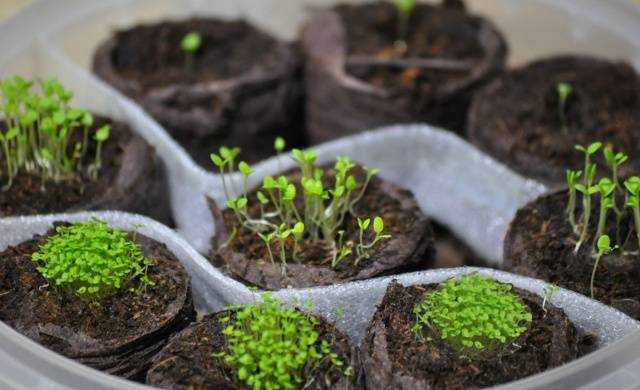
When choosing a lobelia variety for your garden, there are a few factors to consider. Lobelia plants come in various types and colors, each with different growing habits and requirements. Here are some tips to help you choose the right lobelia variety for your needs:
1. Annual vs Perennial Lobelia
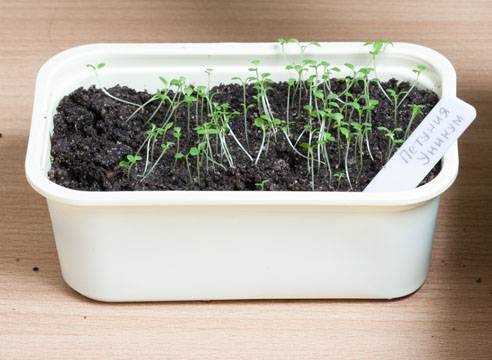
Lobelia plants can be either annual or perennial. Annual lobelias grow and flower for one season and then die off, while perennial lobelias come back year after year. Consider whether you want a plant that requires replanting each year or prefers a long-term option.
2. Growth Habit
There are trailing lobelia varieties that are great for hanging baskets and containers, as well as upright varieties that are suitable for borders and beds. Consider the space you have available and the desired aesthetics when choosing the lobelia growth habit.
3. Flower Color
Lobelias come in a wide range of flower colors, including blue, violet, pink, white, and red. Consider the color palette of your garden and choose a lobelia variety that complements or adds contrast to the existing colors.
4. Sun vs Shade
Some lobelia varieties prefer full sun, while others tolerate partial shade. Consider the lighting conditions in your garden and choose a lobelia variety that will thrive in the available sunlight.
5. Water Requirements
Lobelia plants generally prefer moist soil but can tolerate some drought. Consider the watering routine you can commit to and choose a lobelia variety that matches your watering capabilities.
6. Disease Resistance
Some lobelia varieties are more resistant to common diseases and pests than others. If disease resistance is a concern in your area, choose a lobelia variety known for its resilience.
7. Personal Preference
Ultimately, choose a lobelia variety that appeals to your personal taste and preferences. Whether you prefer delicate trailing flowers or bold upright blooms, there is a lobelia variety out there that will suit your style.
By considering these factors and doing some research, you can select the right lobelia variety for your garden that will thrive and add beauty to your outdoor space.
Consider Lobelia Growth Habit
Lobelia plants come in a variety of growth habits, which can influence their suitability for different garden environments. When choosing lobelia plants, it’s important to consider their growth habit to ensure they will fit well in your garden.
Trailing Lobelia
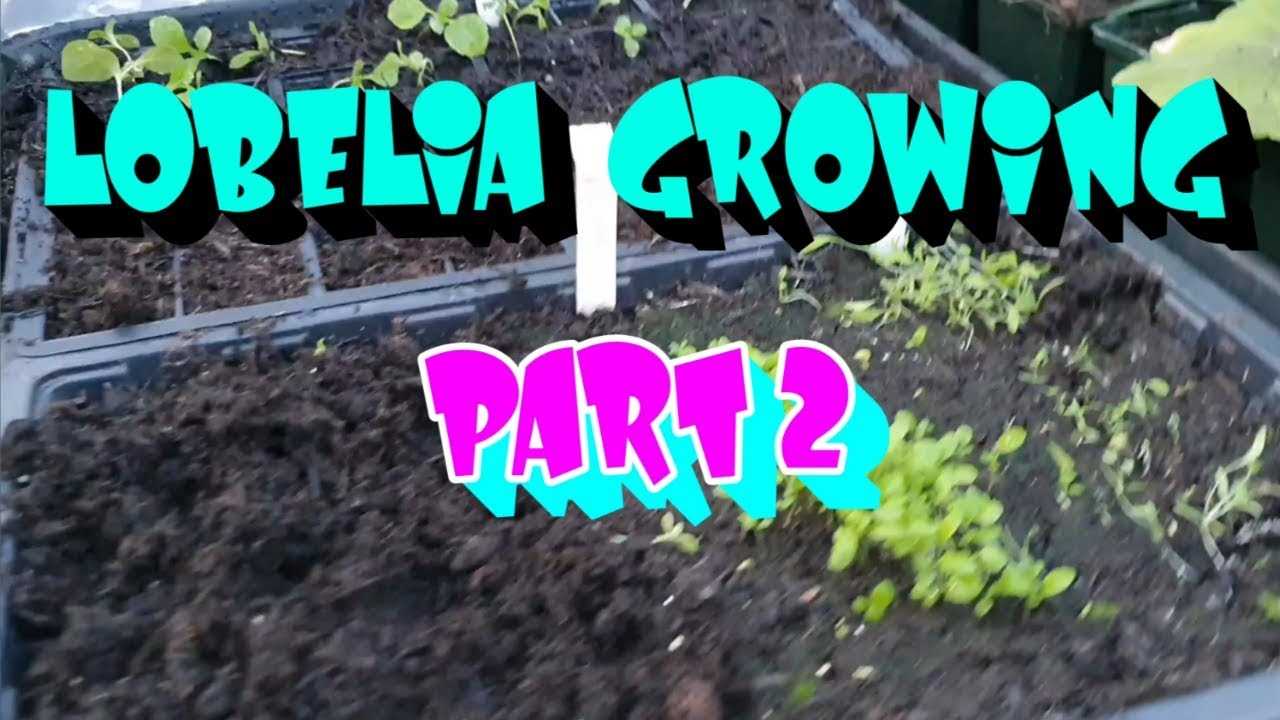
Trailing lobelia plants have a cascading growth habit, with long, trailing stems that can reach up to 18 inches in length. These plants are ideal for hanging baskets, window boxes, or garden borders where they can spill over the edge. Trailing lobelia plants are often prized for their beautiful, delicate flowers that create a stunning display of color.
Upright Lobelia
Upright lobelia plants have a more compact and erect growth habit, with stems that stand upright. These plants are excellent for adding vertical interest to garden beds or containers. Upright lobelia plants typically grow to a height of 6-12 inches and are known for their vibrant flowers that range in color from blue and purple to pink and white.
Groundcover Lobelia
Groundcover lobelia plants have a spreading growth habit and form a low, dense carpet of foliage. These plants are suitable for filling in empty spaces in the garden or for planting between pavers or in rock gardens. Groundcover lobelia plants are often valued for their ability to suppress weeds and provide a lush, green groundcover.
Compact Lobelia
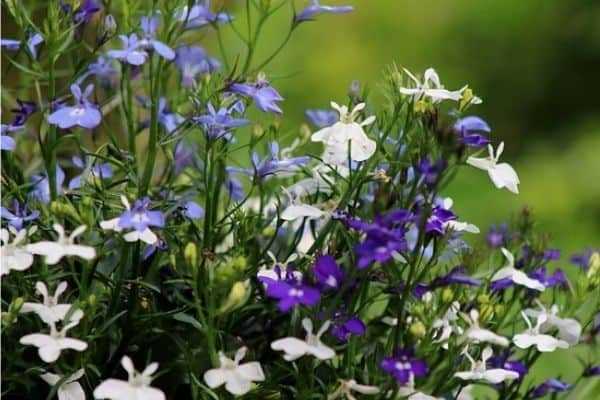
Compact lobelia plants have a bushy, compact growth habit and remain low to the ground. These plants are great for edging garden beds or for planting in containers or hanging baskets. Compact lobelia plants typically have a neat, mounding appearance and produce an abundance of flowers that create a colorful display.
| Growth Habit | Height | Spread | Best Use |
|---|---|---|---|
| Trailing Lobelia | Up to 18 inches | Trailing | Hanging baskets, window boxes, garden borders |
| Upright Lobelia | 6-12 inches | Upright | Garden beds, containers |
| Groundcover Lobelia | Low to the ground | Spreading | Filling empty spaces, between pavers, rock gardens |
| Compact Lobelia | Varies | Low and mounding | Edging, containers, hanging baskets |
By considering the different growth habits of lobelia plants, you can select the right varieties for your garden needs and create a beautiful and harmonious planting scheme.
Choose the Right Color
When choosing lobelia plants, one important factor to consider is the color of the flowers. Lobelia plants come in a variety of colors, including blue, purple, white, and pink. Selecting the right color can help enhance the overall aesthetic of your garden or container.
Blue Lobelia: Blue lobelia flowers are one of the most popular choices among gardeners. The vibrant blue color adds a striking pop of color to any garden or container. Blue lobelia can be paired with white or yellow flowers to create a visually appealing contrast.
Purple Lobelia: Purple lobelia is another great option for adding a splash of color to your garden. The deep purple hue adds a sense of elegance and sophistication to any landscape. Purple lobelia pairs well with pink or white flowers, creating a lovely color combination.
White Lobelia: If you prefer a more subtle and classic look, white lobelia is a perfect choice. The purity of white flowers can brighten up any space and create a sense of tranquility. White lobelia can be used as a border or mixed with other colors to create a charming garden display.
Pink Lobelia: For a softer and more feminine touch, pink lobelia is a fantastic option. The delicate pink flowers are eye-catching and add a touch of romance to any garden. Pink lobelia can be mixed with purple or white flowers to create a visually pleasing contrast.
When selecting lobelia plants, consider the other plants in your garden and the overall color scheme you want to achieve. Choosing the right color of lobelia can help create a harmonious and visually appealing garden display.
Know the Growing Requirements
Before choosing lobelia for your garden, it’s important to understand its growing requirements. Lobelia is a versatile plant that can thrive in various conditions, but it still has specific needs.
Sun Exposure
Lobelia prefers full sun, meaning it needs at least 6 hours of direct sunlight per day. However, it can tolerate some shade, especially in hotter climates. If you’re planning to grow lobelia in a shady area, choose a variety that is known for its shade tolerance.
Soil Conditions
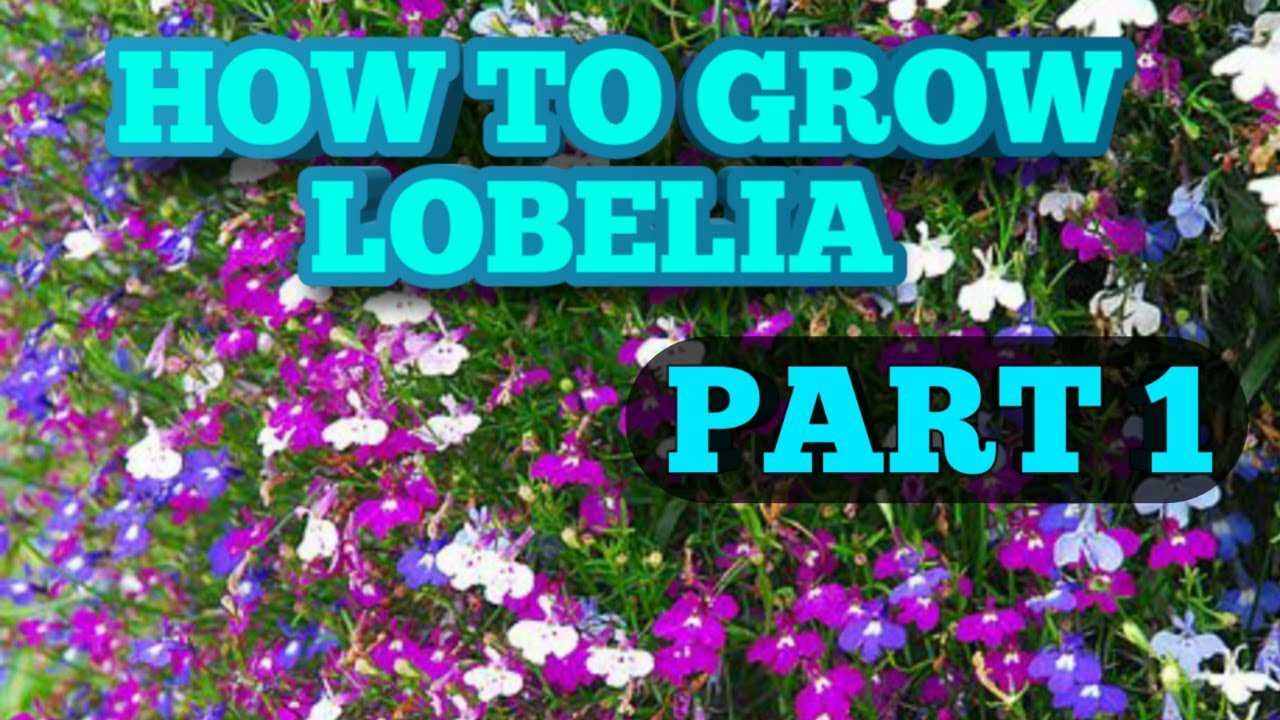
Lobelia grows best in well-draining soil that is rich in organic matter. It prefers a soil pH between 5.6 and 6.5, which is slightly acidic. Before planting lobelia, amend the soil with compost or well-rotted manure to improve its fertility and drainage.
Watering Needs
Lobelia requires consistent moisture to thrive. Water the plants regularly, especially during dry periods. However, be careful not to overwater, as it can lead to root rot. Allow the soil to dry slightly between waterings to prevent this problem.
Temperature and Humidity
Lobelia is a cool-season plant that prefers temperatures between 45°F and 70°F (7°C to 21°C). It can tolerate slightly higher temperatures but may suffer in extreme heat. Lobelia also appreciates moderate humidity, so if you live in a very dry climate, you may need to provide extra moisture.
Fertilizing
To promote healthy growth and abundant blooms, fertilize lobelia regularly. Use a balanced fertilizer with equal amounts of nitrogen, phosphorus, and potassium. Apply the fertilizer according to package instructions, usually once every 4 to 6 weeks during the growing season.
Check Hardiness Zone
Before choosing lobelia plants, it is important to check your hardiness zone. Lobelias are typically grown as annuals or perennials, depending on the hardiness zone they are suitable for. Hardiness zones are geographical areas that are defined by their average annual minimum temperature.
To determine your hardiness zone, you can refer to the USDA hardiness zone map. This map divides the United States into different zones based on their temperature ranges. Different types of lobelia plants are suitable for different hardiness zones, so it is important to choose a variety that is compatible with your zone.
Once you have determined your hardiness zone, you can select the appropriate lobelia plants for your garden. For example, if you are in a colder zone, you may want to choose a variety of lobelia that is more frost-tolerant.
Checking your hardiness zone is an essential step in choosing lobelia plants, as it ensures that you select varieties that will thrive in your specific climate. By selecting the right plants for your zone, you can increase the chances of successful growth and blooming of your lobelias.
Consider Light Requirement
When choosing lobelia varieties for your garden, it is important to consider their light requirement. Lobelia plants generally prefer full sun to partial shade, but there are some varieties that can tolerate more shade than others.
To determine the light requirements of lobelia plants, you can refer to the information provided on the seed packet or plant label. This should indicate whether the variety prefers full sun, partial shade, or full shade.
If you have a sunny garden with ample sunlight throughout the day, you can choose any lobelia variety that prefers full sun. These varieties will thrive in direct sunlight and produce vibrant blooms. However, if your garden gets a lot of shade or you want to plant lobelia in a shady area, it is best to choose varieties that can tolerate shade.
When planting lobelia in a shady area, it is important to ensure that there is still some light reaching the plants. While lobelia can tolerate shade, they still need some amount of sunlight to grow and bloom properly. If the area is too dark, the lobelia seedlings may stretch or become leggy in their search for light. This can affect their overall growth and flowering.
To prevent seedling stretching, it is recommended to provide supplemental lighting, such as artificial grow lights, if the natural light in the area is insufficient. This will help the lobelia plants receive adequate light and prevent them from becoming leggy.
In summary, consider the light requirement of lobelia varieties when choosing which ones to plant in your garden. Determine whether they prefer full sun, partial shade, or full shade, and choose accordingly. If planting in a shady area, ensure that there is still some light reaching the plants, and consider providing supplemental lighting if needed to prevent seedling stretching.
Understand Soil Preference
Lobelia plants have specific soil preferences which should be considered when choosing the right soil for them. Understanding these preferences can help prevent seedling stretching and ensure healthy plant growth.
Well-Drained Soil
One important characteristic of soil for lobelia plants is that it should be well-drained. This means that the soil should not retain excessive amounts of water. Excessively wet soil can lead to root rot and other diseases in lobelia plants. It is recommended to choose soil that drains well and allows excess water to flow away.
Moisture Retention
While well-drained soil is important, it is also crucial to choose soil that retains moisture. Lobelia plants require moist soil to thrive, so it’s important to strike a balance between good drainage and moisture retention. The soil should be able to hold some water to keep the plants hydrated without becoming waterlogged.
pH Level
Lobelia plants prefer slightly acidic to neutral soil with a pH level between 5.5 and 7.0. It is recommended to test the pH level of the soil before planting lobelia. If the soil is too acidic, lime can be added to raise the pH level. If the soil is too alkaline, sulfur or other amendments can be added to lower the pH level. Maintaining the correct pH level can help ensure optimal nutrient uptake by the plants.
Organic Matter
Lobelia plants thrive in soil that is rich in organic matter. Adding compost, well-rotted manure, or other organic materials to the soil can help improve its fertility and provide essential nutrients to the plants. Organic matter also helps improve soil structure, drainage, and moisture retention.
Fertilization
Lobelia plants benefit from regular fertilization. Before planting, it is recommended to work a slow-release fertilizer into the soil. This will provide a steady supply of nutrients to the plants as they grow. Additionally, regular fertilization throughout the growing season can help ensure healthy and vigorous lobelia plants.
By understanding the soil preferences of lobelia plants, gardeners can choose the right soil and provide ideal growing conditions for these beautiful flowers. This will help prevent seedling stretching and promote strong and healthy growth.
Prevent Seedling Stretching
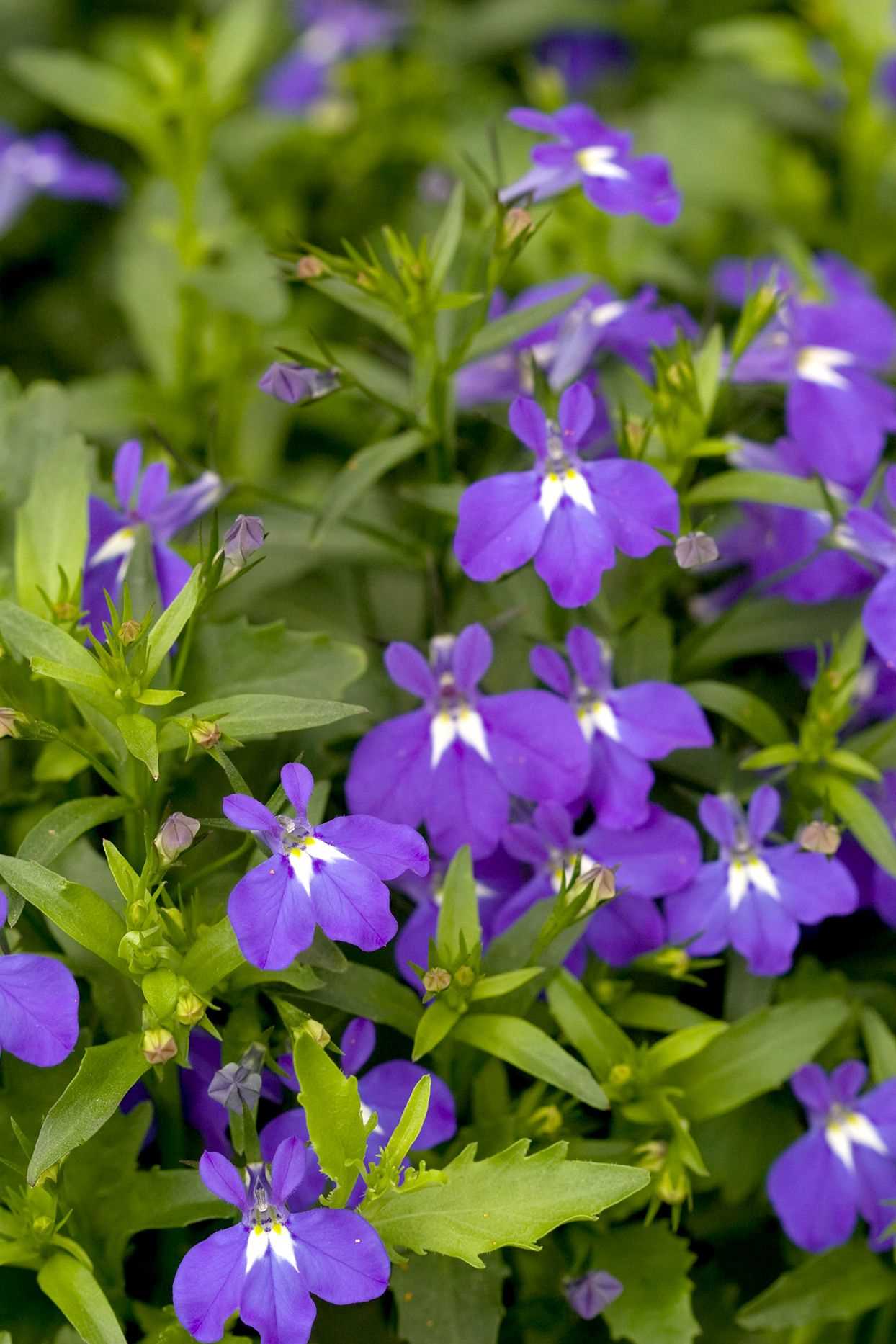
Seedling stretching, or etiolation, occurs when seedlings grow tall and spindly due to insufficient light exposure. This can happen when growing lobelia seedlings indoors or in low-light conditions. However, there are several steps you can take to prevent seedling stretching and promote healthy, compact growth:
- Provide adequate light: Place your seedlings in a location with bright, indirect light. If you are growing them indoors, consider using fluorescent grow lights or LED grow lights to provide the necessary intensity and duration of light.
- Control temperature: Keep the temperature consistent and within the optimal range for lobelia seedling growth. This typically falls between 60 to 65 degrees Fahrenheit (15 to 18 degrees Celsius).
- Avoid overwatering: Excess moisture can contribute to seedling stretching. Allow the soil to dry slightly between watering and make sure the pots have drainage holes to prevent waterlogged roots.
- Use a fan: Gently blowing air across the seedlings can help strengthen their stems and prevent stretching. This creates a mild breeze, simulating natural outdoor conditions.
- Apply the appropriate fertilizer: Use a balanced, water-soluble fertilizer with a higher phosphorus (P) ratio to promote compact growth. Avoid over-fertilizing, as this can also lead to stretching.
- Transplant seedlings at the right time: Once the seedlings have developed their second set of true leaves, they can be transplanted into larger containers or directly into the garden. This gives them more space for growth and helps prevent crowding, which can contribute to stretching.
- Thin out overcrowded seedlings: If you have sown multiple seeds in a single container, thin out the weaker seedlings to allow the remaining ones more space to grow. Overcrowding can lead to competition for light and nutrients, resulting in stretching.
- Prune leggy seedlings: If seedlings have already stretched too much, you can prune them back to encourage branching and more compact growth. This should be done carefully to avoid damaging the remaining healthy foliage.
- Harden off seedlings: Before transplanting seedlings into the garden, gradually acclimate them to outdoor conditions. Start by placing them outdoors for a few hours a day, gradually increasing the time over a period of 7 to 10 days. This helps the seedlings adjust to the differences in light intensity and temperature.
By following these tips, you can prevent seedling stretching and ensure that your lobelia seedlings grow into healthy, compact plants with abundant blooms.
Sow Seeds at the Right Time
When it comes to sowing lobelia seeds, timing is crucial. Lobelia is a frost-tender plant, which means it should only be planted outdoors after the danger of frost has passed. The exact time to sow seeds will depend on your location and local weather conditions. Here are some general guidelines to help you determine the right time to sow lobelia seeds:
- Check the last frost date: Find out the average date of the last frost in your area. This information can usually be obtained from your local agricultural extension service or gardening resources. Lobelia seeds should be sown after this date to ensure they are not affected by frost.
- Consider the growing season: Lobelia seeds take time to germinate and grow into sturdy seedlings. Take the total length of your growing season into account when deciding when to sow seeds. Ideally, you want to give the seedlings enough time to mature before the first autumn frost arrives.
- Start seeds indoors: To give your lobelia seeds a head start and ensure successful germination, it’s recommended to start them indoors about 8-10 weeks before the last frost date. This will help the seedlings grow strong and healthy before being transplanted outdoors.
- Hardening off: Once your lobelia seedlings have reached a certain size and the danger of frost has passed, you need to gradually acclimate them to outdoor conditions. This process, known as hardening off, involves exposing the seedlings to outdoor temperatures and sunlight for increasing periods of time over the course of a week or two.
By following these guidelines and sowing lobelia seeds at the right time, you can ensure a successful growing season and prevent seedling stretching.
Questions and Answers:
What is lobelia and why is it popular?
Lobelia is a popular annual plant that is known for its vibrant and colorful flowers. It is often used in containers and hanging baskets to add a pop of color to any garden or patio.
Should I start lobelia seeds indoors?
Yes, starting lobelia seeds indoors is a good idea, especially if you live in a cooler climate. This will give the seeds a chance to germinate and grow before the outdoor conditions are ideal for planting.
How do I prevent lobelia seedling stretching?
To prevent lobelia seedling stretching, you need to provide enough light for the seedlings. Place them in a sunny location or use artificial grow lights to give them the light they need to grow sturdy and compact.
What should I do if my lobelia seedlings are already stretching?
If your lobelia seedlings are already stretching, you can try lowering the temperature in the room where they are kept. This can help slow down their growth and encourage them to become more compact.
Are there any specific types of lobelia that are less prone to stretching?
Yes, there are some types of lobelia that are less prone to stretching. Look for compact varieties like Lobelia erinus or Lobelia x speciosa that are known for their sturdy growth and shorter stems.
Can I grow lobelia from cuttings instead of seeds?
Yes, you can grow lobelia from cuttings. Take a cutting from a mature lobelia plant, remove the lower leaves, and place the cutting in a pot with moist soil. Keep the cutting in a warm and humid environment until it roots and then transplant it into a larger container or in the garden.
How often should I water my lobelia plants?
Lobelia plants require regular watering, especially during hot and dry weather. Water them whenever the top inch of soil feels dry to the touch. Avoid overwatering, as this can lead to root rot.







